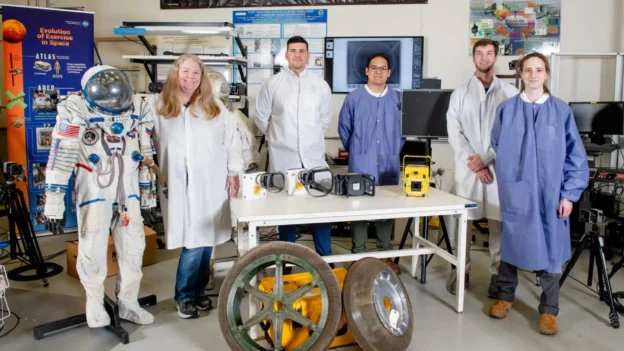NASA is continuing to advance the development of medical technologies for extended space missions, such as those planned for the Moon, Mars and beyond. One of the technologies is the mini X-ray system, a portable tool that will allow astronauts to diagnose and treat medical conditions, such as fractures or dental problems, autonomously during their missions.
Testing of the mini X-ray system
As space missions move farther away from Earth, the challenges in terms of medical care become more complex. NASA is working on technologies for these problems, knowing that astronauts will not be able to rely on Earth for quick help due to communications delays and limited return options.
This compact system will allow astronauts to diagnose medical problems immediately, without the need to wait for assistance from Earth. In addition to being portable and easy to use, these devices can analyze both astronauts and spacecraft equipment, allowing damage assessment without having to disassemble the equipment.
The research team at NASA’s NASA Glenn Research Center Research team at NASA’s Glenn Research Center in Cleveland has been conducting extensive testing on several portable X-ray systems, reviewing more than 200 commercial models. After evaluating factors such as size, weight, image quality, cost, and ease of use, three systems-MinXray, Remedi , and Fujifilm-wereselected for more detailed testing.
In addition, NASA has collaborated with other research centers and with educational and medical institutions such as Cuyahoga Community College, which has allowed progress to be made in tests with anatomical models and comparison with hospital X-ray systems.
A major event occurred in April 2025, when SpaceX’ s Fram2 mission launched an X-ray system into space, obtaining the first human X-ray images in low Earth orbit.
After this selection, testing will continue on the International Space Station. International Space Station(ISS) in 2026 or early 2027. This testing phase will be critical to ensure that the chosen system meets all the technical and safety requirements necessary for use on space missions.
Although this technology is initially designed for space, mini X-rays also have great potential to improve medical care on Earth. These devices could be used in remote areas, regions affected by natural disasters or in areas with limited access to advanced medical care.
Source and photo: NASA

